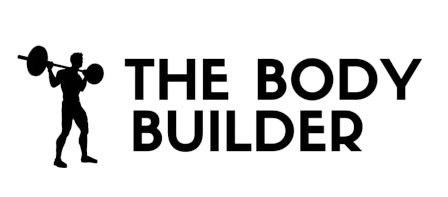Kickboxing is not just a form of exercise; it is a full-body workout that can improve your physical appearance, increase strength, and enhance mental well-being. Scientific research has shown that kickboxing can have a significant impact on various markers such as strength and flexibility. If you are looking to reap these benefits but are unsure of where to start, look no further. I have crafted the ultimate kickboxing workout that caters to beginners and seasoned practitioners alike.
The Best Kickboxing Workout (3-Day Split)
Skills and striking training are at the core of this workout plan. For optimal results, it is recommended to engage in three to four kickboxing training sessions per week. Here is a breakdown of how a weekly kickboxing workout could be structured:
Day 1: Striking Technique (Bag Work and Pad Work)
Beginners should focus on mastering the fundamental skills, including different punches and kicks through bag and pad training sessions. The workout includes a variety of exercises to improve technique and build strength.
Warm-Up
– Jump Rope: 5 minutes (Moderate)
– Shadowboxing: 5 minutes (High)
Bag Training
– Jab, Cross, Hook: 2 sets of 20 reps (Moderate)
– Teep, Roundhouse kick: 2 sets of 20 reps (Moderate)
– Switch Kick: 2 sets of 20 reps (Moderate)
– Cross, Lead Hook combo: 2 sets of 10 reps (High)
– Jab, Rear Hook, Switch Kick Combo: 2 sets of 10 reps (High)
Finish the bag work with a 3-minute freestyle shadowboxing session. Rest for five minutes before proceeding to pad training.
Pad Training
– Punch Combo Speed Drill: 3 sets of 90 seconds (High)
– Kick Combo Speed Drill: 3 sets of 90 seconds (High)
– Punch Combo Power Drill: 3 sets of 90 seconds (High)
– Kick Combo Power Drill: 3 sets of 90 seconds (High)
– Freestyle Speed Drill: 3 sets of 120 seconds (Moderate)
Take a 2-minute rest between drills and conclude the session with 10 minutes of moderate-pace cycling.
Day 2: Defensive Techniques and Footwork Focus
The second training session of the week will concentrate on defensive maneuvers and footwork techniques to enhance overall defensive capabilities.
Warm-Up
– Jump Rope: 5 minutes (Moderate)
– Speed Ladder: 5 minutes (High)
Pad Training
– Defensive drills: 2 sets of 5 minutes each (Moderate)
– High-intensity pad work: 2 sets of 5 minutes each (High)
– Partner drills: 2 sets of 5 minutes each (Moderate)
– Freestyle partner drill: 2 sets of 5 minutes each (Moderate-to-high)
Touch Drills
– Counter-attack drill: 5 minutes (Moderate)
– Evasive drill: 5 minutes (Moderate)
– Freestyle defensive drill: 5 minutes (High)
Rest for 60 seconds after each drill and finish the session with a 10-minute jog.
Day 3: All-Around Kickboxing
The focus of the third day’s workout is to apply the acquired skills in a combat scenario.
Warm-Up
– Jump Rope: 5 minutes (Moderate)
– Burpees: 5 minutes (Moderate)
– Shadowboxing: 5 minutes (High)
Touch Drills
– Offensive drill: 5 minutes (Moderate)
– Defensive drill: 5 minutes (Moderate)
– Freestyle balanced drill: 5 minutes (High)
Sparring
The main segment of the third weekly workout is a 5-round sparring session, with each round lasting five minutes. The goal of sparring is to push yourself and perform at your best. Conclude the session with moderate-pace cycling.
Kickboxing Warm-Up Routine
Kickboxing necessitates a dynamic and intense warm-up to prepare the body adequately for the training ahead. A combination of jump rope, burpees, and shadowboxing is recommended to activate various muscle groups and elevate heart rate.
Strength and Conditioning Training for Kickboxing
Incorporating strength and conditioning exercises into your kickboxing routine is vital for improving performance, building strength, and reducing the risk of injuries. A well-rounded training program should focus on power, explosiveness, and endurance.
Day 1: Lower Body Power
Day one’s strength and conditioning session should emphasize lower body power through exercises like weighted jumps, leg extensions, and curls to target key muscle groups required for kickboxing techniques.
Day 2: Upper Body Power
The second session focuses on building upper body strength and power through ballistic exercises. Each exercise should be performed with maximum intensity to enhance punching power.
By following a structured kickboxing workout plan that includes a mix of technique training, defensive maneuvers, and sparring sessions, practitioners can enhance their skills, improve physical fitness, and elevate their overall well-being.

